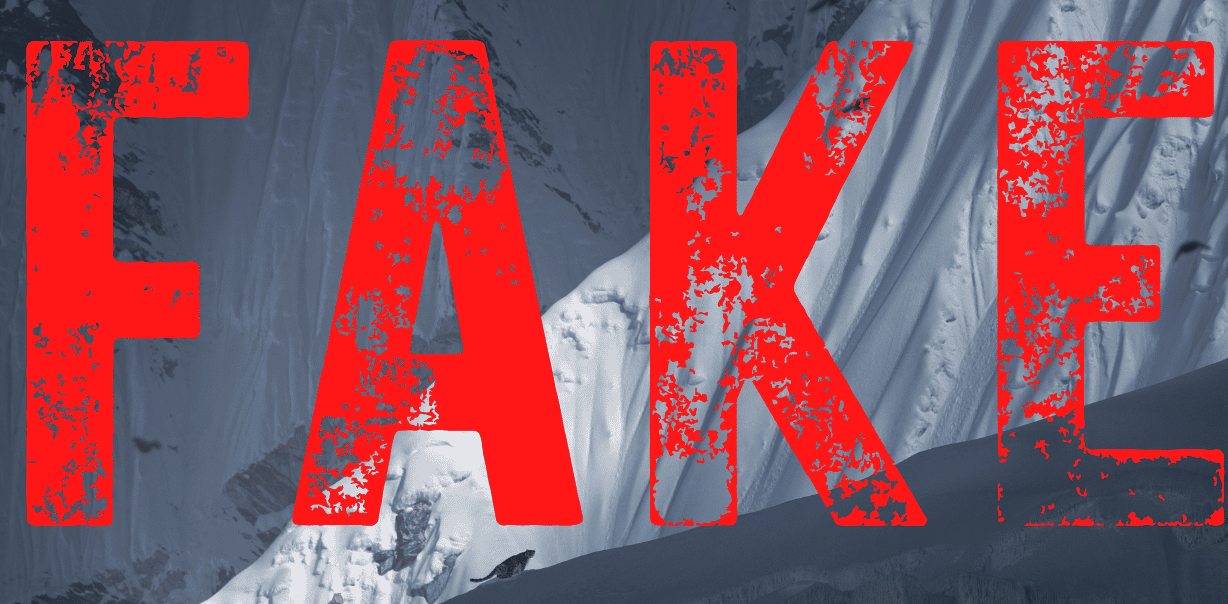US photographer, Kittiya Pawlowski, who was behind last year’s viral snow leopard photo hoax, is attempting to scrub her wrongdoing from online search engines by filing image copyright complaints to Google.
Media outlets reporting on Pawlowski’s photo hoax have had DMCA takedown notices filed by Pawlowski, including this publication, Alpine Magazine, Skotkit, and Petapixel.
DMCA is the US 1998 Digital Millennium Copyright Act, a system for copyright holders to request the removal of their content from a website or internet platform. An example of a common DMCA takedown is when a YouTube channel uploads content featuring protected music or video clips. The video can be de-monestised, preventing the creator from profiting from the video, or removed entirely.
Creators can also file DMCA complaints to Google and other platforms to have webpages de-listed from search results, thereby reducing the organic reach of the website. And just over a week ago Google notified Inside Imaging Pawlowski filed a takedown notice against our article, Fake it until you make it.
Kittiya Pawlowski and the fake snow leopard
Pawlowski made headlines in late 2022 for supposedly capturing a couple of the finest wildlife pictures of endangered snow leopards posing majestically upon snow-capped mountains. She span a yarn to accompany the images about how she ‘backpacked 103 miles’ and ‘straddled the top of the world’ in pursuit of the elusive snow leopard.
Pawlowski’s fake images went viral on social media and were then picked up by mainstream and photo media, providing a stamp of credibility to herself and the pictures. Before the jig was up, Pawlowski claimed to have sold almost 50 prints, with some for sale for US$2235 on the Saatchi Art marketplace.
Then a small French mountaineering publication, Alpine Magazine, began questioning the veracity of the images.
Inside Imaging‘s editorial team isn’t interested in viral image stories. That isn’t our beat. But our ears pricked up when the story became about a photographer duping her audience to sell fake wildlife photos.
Here’s an excerpt of our coverage from 2022:
The Alpine Magazine editorial team were disturbed by the lighting, which appears ‘a little strange and the images show collage effects reminiscent of photo montages’. And Pawlowski’s photography website is centred entirely around the snow leopard trip, despite an apparently decade-long career.
Alpine Magazine went above and beyond to investigate the photos. They conducted vigorous research to uncover multiple inconsistencies, surveyed meta data, spoke with snow leopard photographers about the animals’ behaviour, and studied Kittiya’s website.
Nothing added up. Journalists Jocelyn Chavy and Ulysse Lefebvre concluded:
– Three photos are demonstrably fake (collage of several fragments of photos);
– The photographer’s real identity remains in doubt;
– The leopard is shown in an improbable location, confirmed by snow-leopard specialist Vincent Munier.Alpine Magazine‘s follow up found more holes in her story. One of her composites appropriates a snow leopard captured by French wildlife photographer, Sylvain Cordier, in Mongolia’s Altai Mountain. Pawlowski inverted Cordier’s snow leopard, but the shape and pose are identical.
‘She has played about a bit with the spots. She’s taken the underside of my leopard’s belly and put it on the leopard on the left…. In any case, seeing my photo next to hers, especially when I turn it, I’m 99.99 percent sure it’s mine.’
Alpine Magazine‘s exposé provides an in-depth detailed account of how Pawlowski created collages. Not only did they prove the snow leopard photos are fake, but they identified specific mountain locations in the background that are inconsistent with reality.
Pawlowski didn’t come clean after her lies were exposed. Instead she chose to, as they say, ‘gaslight’ the world into thinking she was a victim.
‘News and media from around the world stole my images and published them with their own meaning,’ she said about her images going viral. ‘They did not ask me if they were edited. They interpreted them in their own way and spread them around the world. They told their followers that they were not edited. This is untrue, I always edit my images.’
Almost a year later and Pawlowski hasn’t formally acknowledged she co-opted other photographers’ work, including real snow leopard photos, to create composites. Or admitted to fabricating a story about tracking and photographing the leopard. To justify her misleading art her profile now states that: ‘Like a movie director, I create imagery based on stories from my travels’, which includes photos and digital composites – ‘sometimes I blend licensed stock into my composites’. Nice excuse.
And now the disgraced US photographer is attempting to remove any association of the ‘snow leopard photo hoax’ from the name Kittiya Pawlowski. And it’s working.
When Google searching Kittiya Pawlowski only a few results low down on the first page are about her hoax photo. Google’s results include a note that ‘in response to multiple complaints that we received under the US Digital Millennium Copyright Act, we have removed 7 results from this page’. Although Pawlowski seemingly forgot to file DMCA notices against media outlets that praise her majestic snow leopard wildlife picture.
Did we commit copyright infringement?
This would be up to the court of law to decide. And we’re quite happy to leave that question go officially unanswered. However, we’re fairly confident our visual material doesn’t constitute copyright infringement.
Google and DMCA is bound to the US copyright system, meaning we’re able to argue it’s Fair Use, a term likely familiar with Inside Imaging readers. We are no fan of Fair Use, but in the response to the Google complaint this was an option to contest the complaint. The word ‘THEFT‘ transforms Pawlowski’s image into an, um, original creation with new meaning. Fair Use factors in whether the alleged infringement is ‘transformative’, and I’d argue this text sufficiently transforms the meaning of Pawlowski’s original work.
In Australia our usage may fall under the Fair Dealing exception to copyright infringement on the basis of reporting the news. If the image was merely a visual aid to accompany a news report, it would less likely constitute fair dealing.
Streisand effect?
When Google notified us of Pawlowski’s complaint, the journalist within naturally found this to be a fresh angle of the story worth pursuing. Plus, it was the first time anyone ever filed a DMCA notice against us.
It also brought to mind the ‘Streisand effect’, defined as ‘an unintended consequence of attempts to hide, remove, or censor information, where the effort instead backfires by increasing awareness of that information’.
But I don’t believe the snow leopard photo hoax should haunt Kittiya Pawlowski for the rest of her life. People, including Pawlowski, should be forgiven for their errors. Especially if she finds the courage to admit her mistake and own it. She was apparently just 23-years-old when she concocted the story. It’s plausible she didn’t anticipate her image would go that viral, and her little snow leopard tale spiralled into something quite large.
Inside Imaging is even known to remove old articles upon request when it has merit. For example a few years ago a Melbourne studio requested we remove an old article involving an unfair dismissal of an employee. Our coverage appeared front and centre when searching for the studio owner’s son’s name. Even though the matter had been settled in court, our coverage continued to follow the family. So we removed it. And I wouldn’t think twice about doing it again.
Addendum
Three days ago Google sent a notification that it had processed our counter notice and shared it with the complainant, Kittiya Pawlowski. The article will be reinstated in 10 days if she doesn’t intend to take formal legal action. Our counter notice sent to Pawlowski includes my personal contact information: e-mail, phone number, postal address.
Less than an hour afterwards, I by some sheer co-incidence begun receiving unsolicited e-mails. Over a short period my e-mail address was signed up to Scientology Info, Classic Firearms, Click2Houston news, Crosswalk daily prayers, a random US finance newsletter, and, my personal favourite, a mail-order bride service. The person went to the trouble of setting up my account: I’m 4’8, 75-years-old, and argumentative). Over the weekend I received a phone call voicemail from a realtor in New Hampshire following up on my inquiry to buy/sell property. I’m not even mad – it’s humorous petty revenge. Well played, Kittiya!







This person, if it is indeed a she, and I’m not totally convinced that it is, deserves all the bad publicity that “she” gets. And the fact that “she” is now harassing you digitally leaves “her” open to legal action for damages. Your report on this attack should be shared widely.
I would go as far as saying that it is criminal and ‘she’ should face the full force of the law! No one deserves that kind of vitriol.